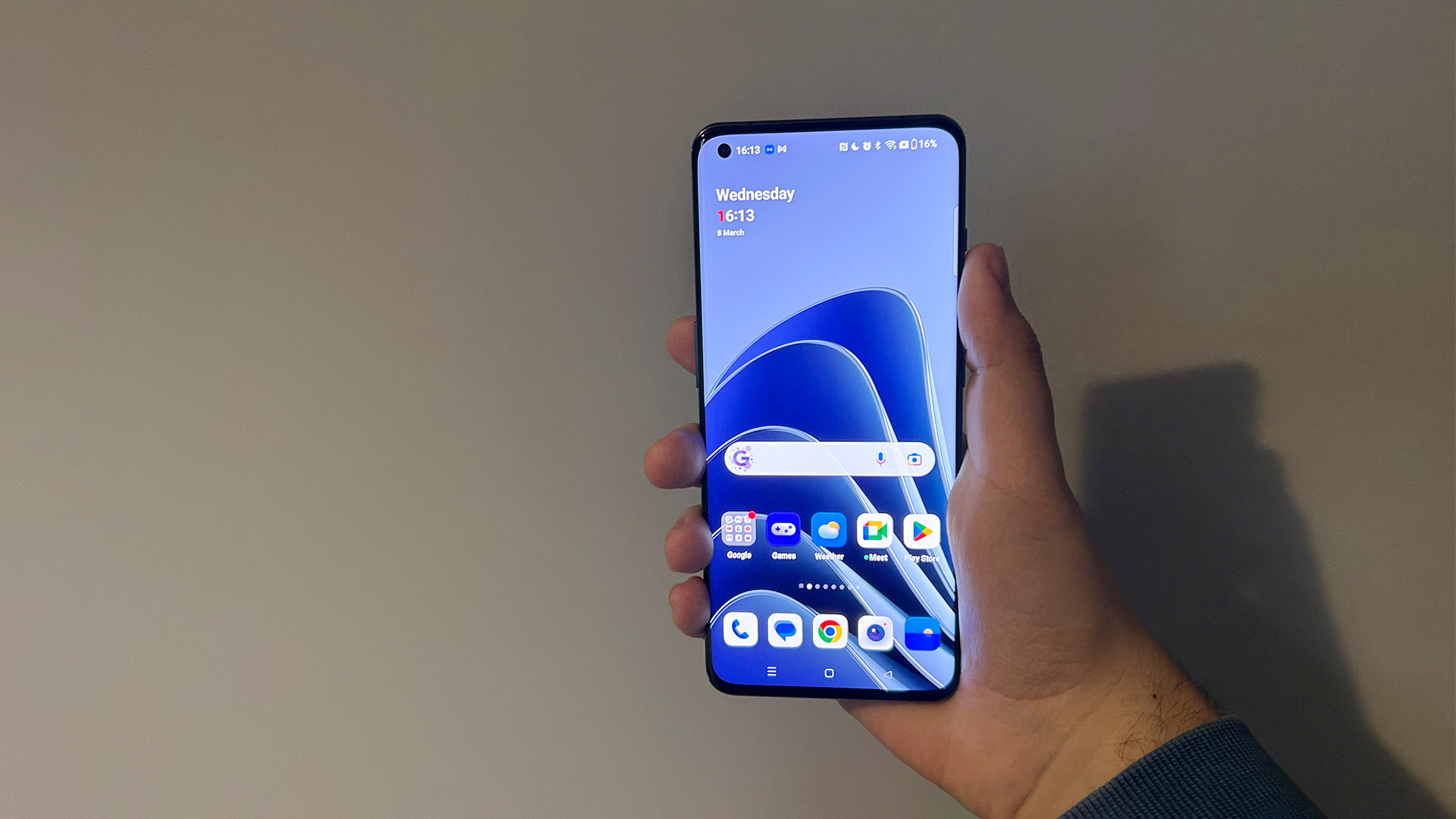What Hi-Fi? Verdict
The OnePlus 11 offers plenty in the way of features and picture appeal, but it can’t quite surpass its flagship rivals, especially in the sound department
Pros
- +
120Hz display
- +
Great HDR compatibility
- +
Cheaper than rivals
Cons
- -
Sound lacks dynamism
- -
Beaten for contrast
- -
No wireless charging
Why you can trust What Hi-Fi?
OnePlus’ ethos has always been more phone for less money, and while that is still the case with the OnePlus 11 5G, the definition of less money has changed since the brand’s first Android smartphone was released almost a decade ago.
However, with prices that still undercut the likes of Samsung and Apple, and with flagship-level specs, build quality and features, it's easy to see the appeal of OnePlus' latest handset. If you’re after a 6.7-inch smartphone with a cutting-edge processor, you’ll be hard-pressed to beat the OnePlus on the specification-per-pound/dollar metric. But does that make the OnePlus 11 the best smartphone for AV enthusiasts? Not quite, but it certainly makes a convincing case for itself.
Price
The OnePlus 11 comes in at £729 / $699 / AU$1199 which, by modern flagship smartphone standards, is fairly reasonable. That gets you 8GB of RAM and 128GB of storage, but you can alternatively opt for a 16GB of RAM and 256GB storage model for a total price of £799 / $799 / AU$1399. In a strange move from OnePlus, it looks like the base model only comes in the Titan Black finish, while the upgraded model only comes in Eternal Green.
The closest Android competitor at this price point is the Samsung Galaxy S23 (£849 / $799 / AU$1349), and while we’ve only spent some brief hands-on time with that device, we can say for sure that it packs a smaller, lower-resolution screen. On the iOS side of things, the iPhone 14 is the closest competitor at £849 / $799 / AU$1399. However, that too features a lower resolution, lower refresh rate and smaller screen, although specs on paper aren’t everything, as we very well know by now.
Build
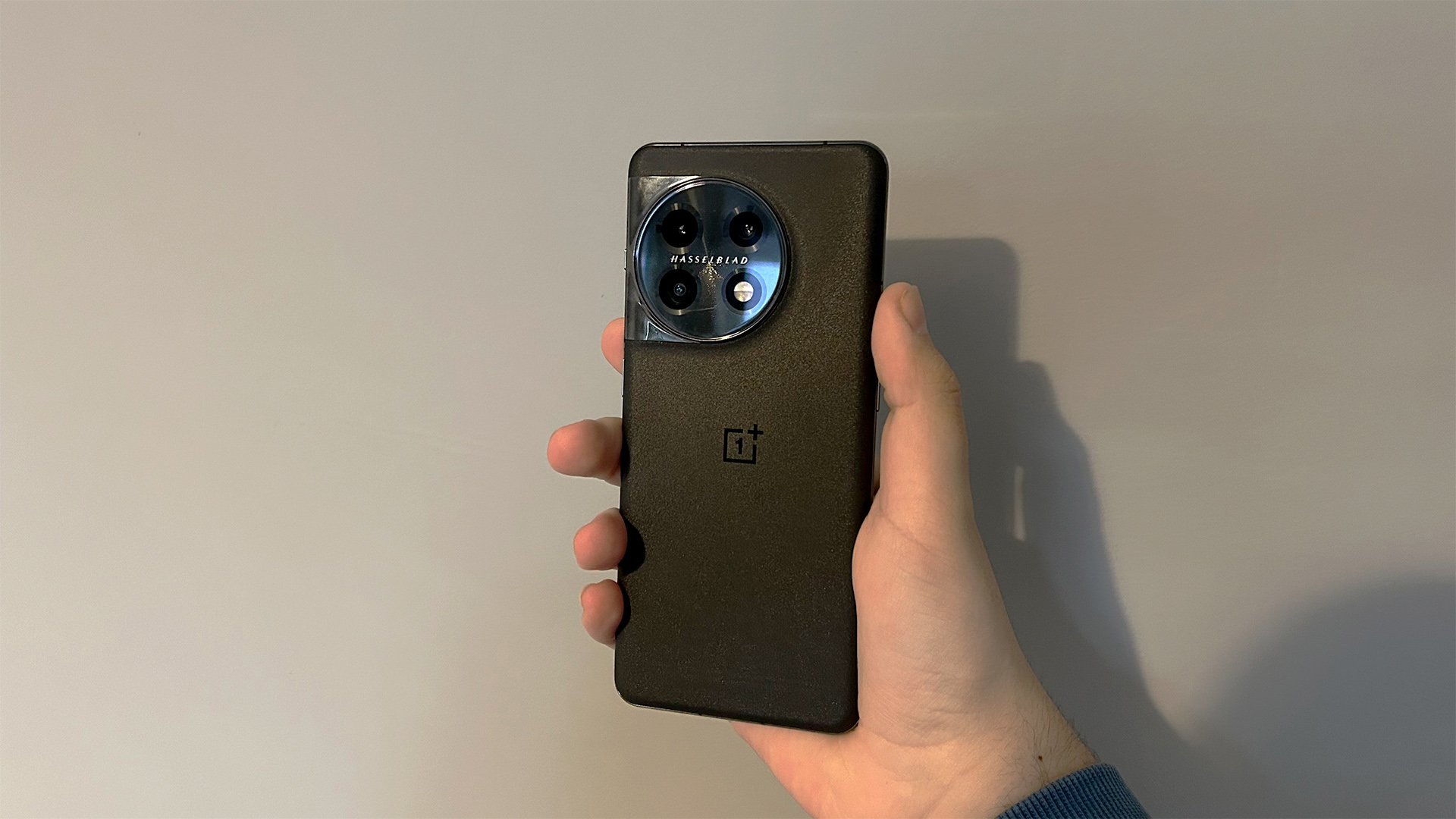
We find the OnePlus’ unique design to be somewhat subjective. While the textured rear glass looks slick and adds much-needed grip to this fairly hefty handheld, the ludicrously large circular camera cluster is nothing short of an eyesore. OnePlus has attempted to integrate the metal housing into the frame of the phone in a fluid design reminiscent of the Samsung Galaxy S21, but it doesn’t detract from the clunky bulging optic module that takes up around a quarter of the phone’s rear.
Flipping over to the front of the device, you’ll find a 6.7-inch display that curves very slightly over the edge for a minimalist, thin-bezel design. There is a single hole-punch camera tucked into the top left of the display, keeping content mostly free of obstructions – unlike Apple’s notch approach.
The OnePlus 11’s metal and glass construction feels solid and adequately weighty without verging on cumbersome, and it features the return of the iconic switch that can alternate the phone between ring, vibrate and silent modes after it was missing from last year’s 10T. Overall, the OnePlus feels suitably luxe for the price, with a pleasant blend of high-end materials.
Features
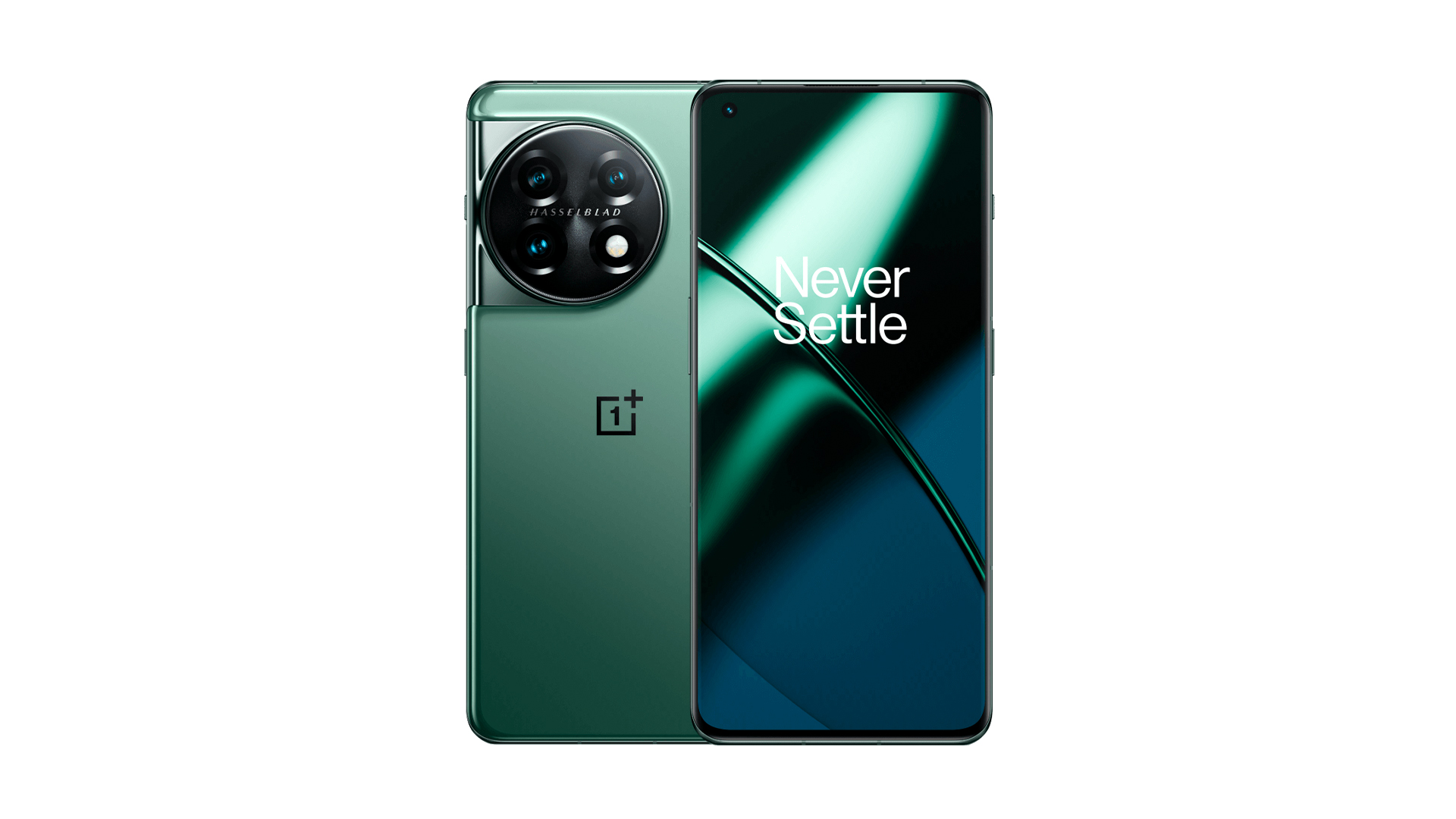
The OnePlus 11 5G packs in practically all of the top-end Android smartphone features you’d expect. We’ve already mentioned the expansive 6.7-inch size of the screen, but it’s also got a QuadHD+ resolution (1440 x 3216) with a pixel density of 525ppi. It reaches a claimed peak brightness of 1300 nits (practically on par with the iPhone 14) and it features a 120Hz refresh rate for smooth scrolling and gameplay. The display also supports HDR in the Dolby Vision and HDR10+ formats, which is a really nice touch when you consider that Samsung only includes HDR10+ on its more expensive Galaxy S23. It's a lot for your money.
The phone even extends its impressive feature set into the audio department with support for Dolby Atmos on the device’s “Dual Reality” stereo speaker arrangement, as well as through headphones. You won’t find a headphone jack on this phone, as is the case with practically all modern smartphones (apart from Sony’s Xperia line), but you do have Bluetooth 5.3 with support for LE, A2DP and aptX HD codecs. You can also plug a wired headset into the USB-C port via a third-party adapter.
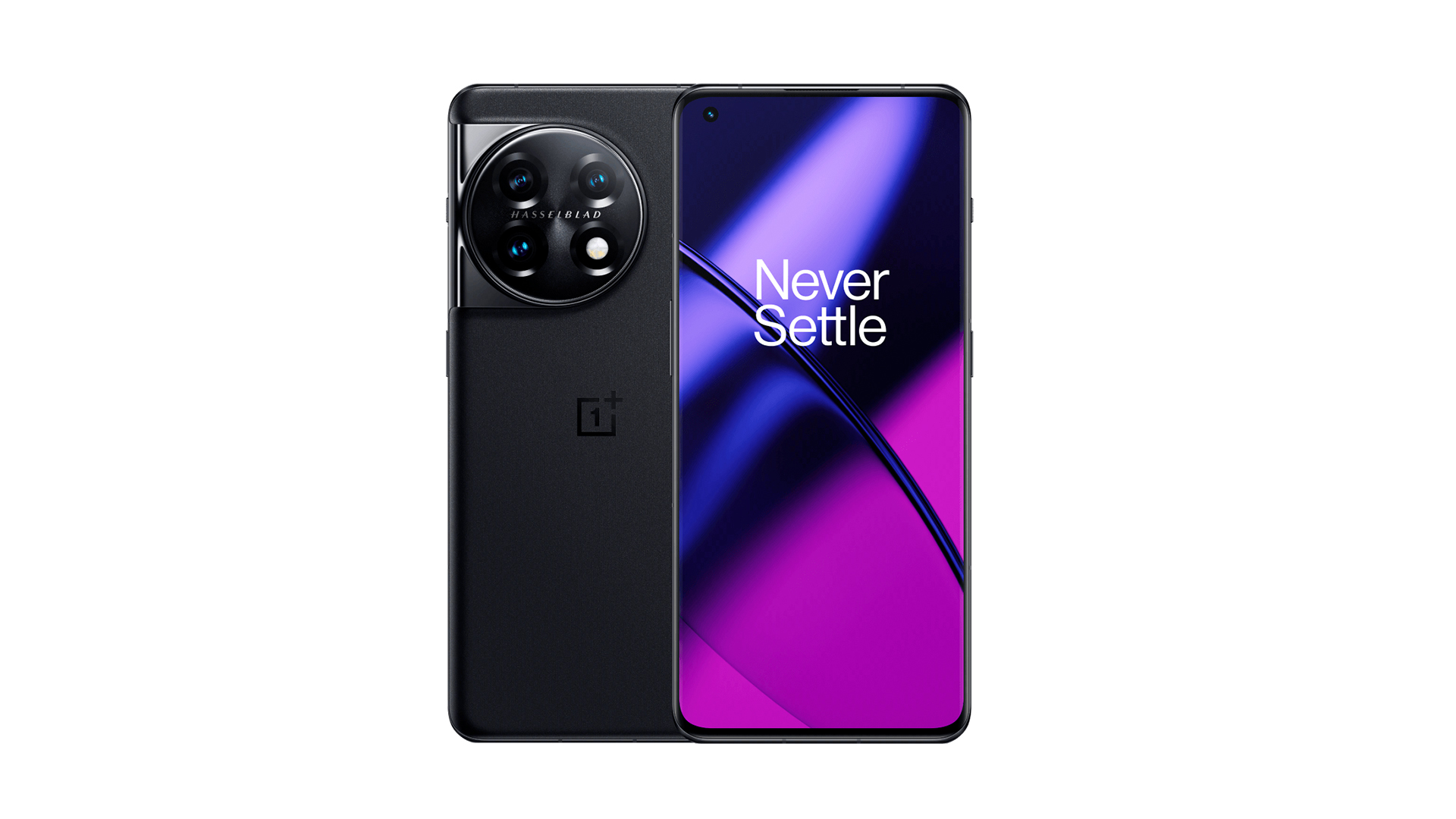
Screen size 6.7-inch
Screen type AMOLED
Screen resolution 1440 x 3216 (525ppi)
Finishes x2 (Titan Black, Eternal Green)
Operating system Android 13 (Oxygen OS)
Storage 128GB/256GB
RAM 8GB/16GB
Onto the non-AV-oriented features of this phone, there’s the aforementioned camera cluster, which consists of three lenses: a 50MP main lens, a 32MP telephoto lens and a 48MP ultra-wide lens, which means you should be covered no matter what you’re shooting. The 11 features Hasselblad branding on the rear camera array, as OnePlus has partnered with the camera company for many of its recent models. Snapping a shot with the OnePlus provides us with a decent image, although the Pixel 7 and iPhone 14 are still the ones to beat in the smartphone camera game.
The OnePlus also gets Qualcomm’s latest flagship Snapdragon 8 Gen 2 processor, which keeps the OxygenOS (based on Android 13) system running smoothly. We are yet to encounter any bugs or glitches with the OnePlus 11, but the OxygenOS is a tad cartoonish for our liking. Thankfully, there don't appear to be any unnecessary bloatware apps preinstalled on the system, which frees up the internal storage space for apps, photos, movies and music.
Battery life on the OnePlus is solid, with a 5000mAh cell powering the device. It’s backed up with OnePlus' SUPERVOOC 100W charging technology, which claims to charge the device from one to 100 per cent in just 25 minutes. Charging is super speedy indeed, thanks to the included fast charging plug, which is something of a rarity these days. However, it's wired charging or nothing with the 11, as it does not support wireless charging despite the company including this feature in last year’s OnePlus 10 Pro.
Picture
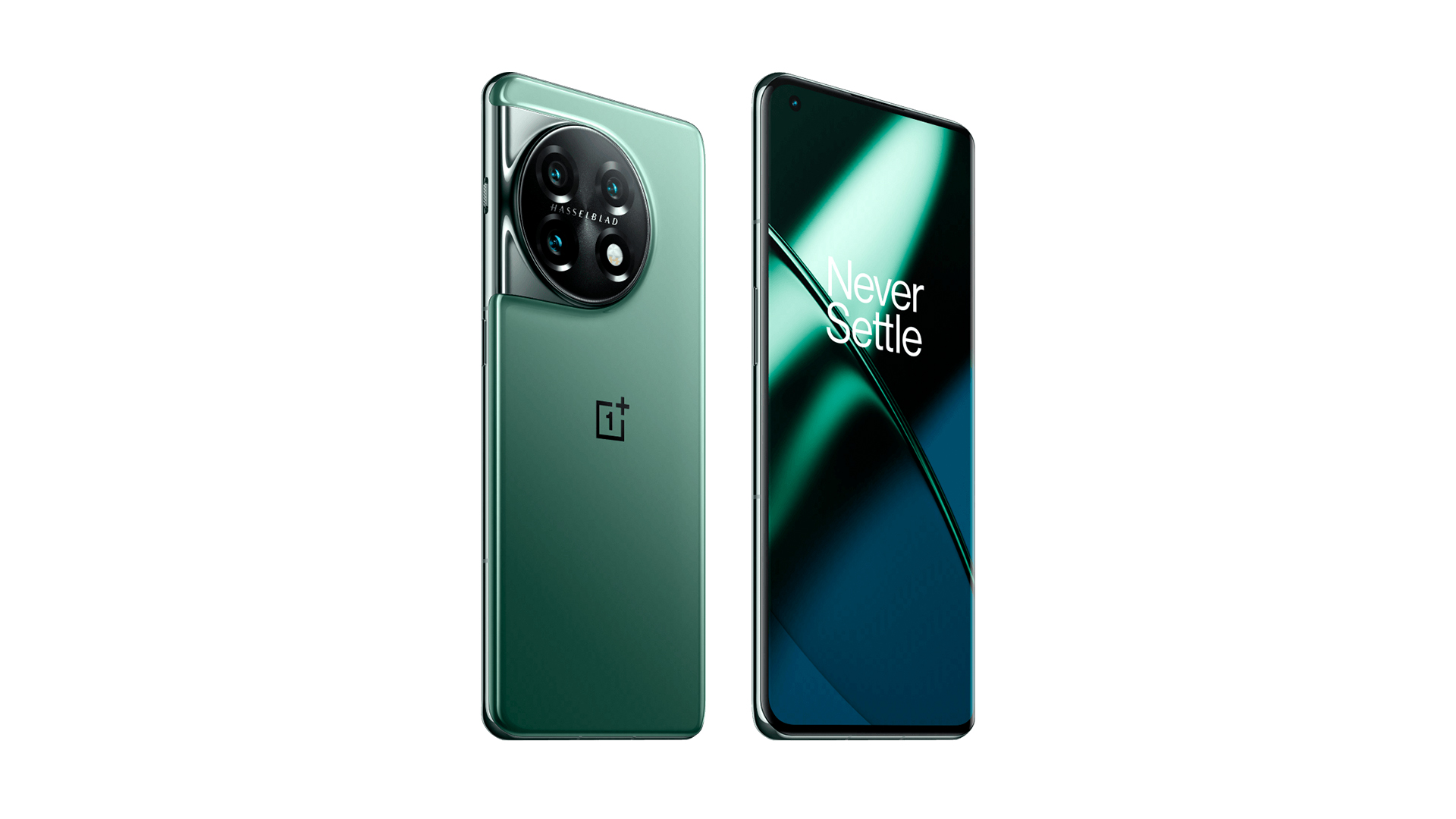
There’s plenty to like when it comes to the OnePlus 11’s display, which shouldn’t come as a surprise considering its specs. We set the phone to the cinematic picture setting, running at QHD+ resolution for our testing, as we believe it's the optimal set-up for watching content on this display. Firing up Drive on Netflix, the strengths of the OnePlus are immediately apparent, with plenty of texture detail in The Driver's skin, even when he's cloaked in shadow during the tense opening scene.
Black depth is also very solid, with the AMOLED panel producing true blacks. This adds a convincing depth to the night sky, as well as the segments of the car interior that are entirely obscured by shadow. This pairs well with the decent handling of contrast, notably when a beam of light hits The Driver’s silver jacket creating a reflective glow while retaining a solid amount of detail from the jacket’s material.
Outlines are sharp and well-defined against the background, and skin, clothing and environmental textures all retain a good amount of detail. The OnePlus’ display is much larger than the iPhone 14’s but it's also more pixel-dense, and it largely appears to put that extra density to good use, delivering lots of integral detail despite the more cinematically large screen.
The OnePlus isn’t quite perfect, though, and it becomes very obvious that the iPhone outperforms it when they are placed side by side. The iPhone produces a slightly crisper image with more balanced colours. The OnePlus features a bold and punchy display that looks great in some instances, but it's apparent that subtlety isn’t its main priority, as the iPhone’s picture feels much more authentic in comparison.
The iPhone also demonstrates its capabilities when it comes to contrast during this opening scene of Drive as a night-time aerial shot overlooking the LA streets pops much more on the Apple phone. This is thanks to its ability to pull out more pinpoint bursts of light from the street lamps and car headlights that pierce through the night sky and shadowy streets.
The OnePlus tries to make the most of its big, bold and sharp screen, but it generalises a bit too much and misses some of the necessary nuances that are needed for a truly cinematic experience. That being said, you will absolutely have a pleasant experience watching content on the 11’s display, especially if you enjoy a bit of punch to your picture.
Sound
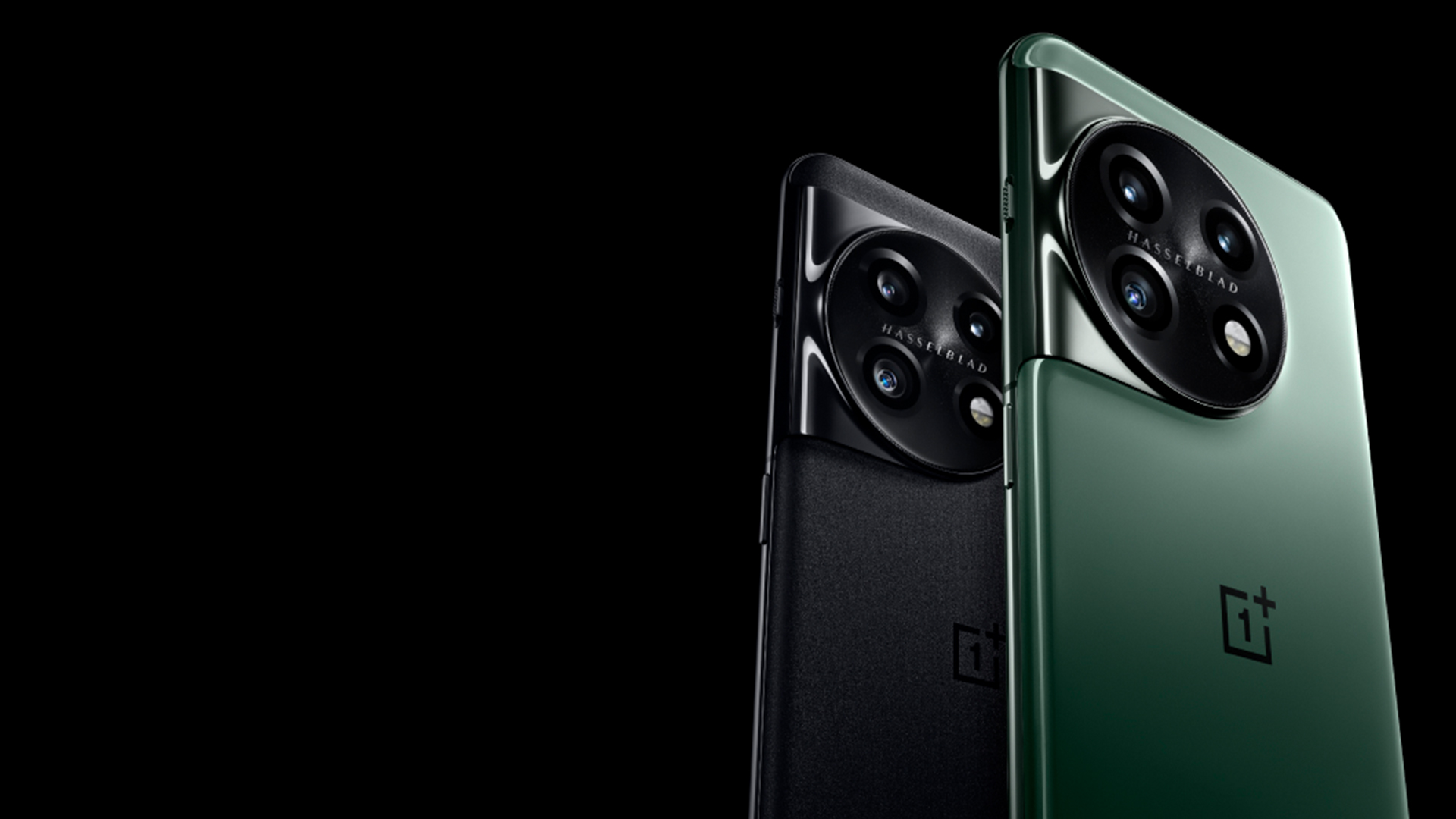
Sound quality is undoubtedly the weakest aspect of the OnePlus 11, as it fails to impress when it comes to both the speakers and headphone performance. Starting with the supposedly Atmos-enabled speakers, we don’t hear the spatial prowess that OnePlus is claiming they are capable of. The thumping electronic soundtrack of Drive sounds slightly thin and lifeless, although switching to Tidal to play The XX’s Crystalised, we do get a hint of dynamics. We're well aware that there are no smartphone speakers that can be described as objectively good, but some are better than others, and the iPhone's are better than the OnePlus', particularly in terms of depth and dynamics.
Headphone performance, while obviously better, is similar in character, as the OnePlus presents music with a noticeable lack of enthusiasm. There isn’t much in the way of dynamics and drive here – something that's apparent when Crystalised hits its supposed crescendo, which fizzles out on the OnePlus. Once again, the iPhone shows up the OnePlus’ shortcomings, as there is much more texture to the vocals and instruments, as well as a touch more energy to keep the track engaging. Overall, the OnePlus isn’t unpleasant to listen to through either the speakers or headphones, but it doesn't particularly impress either.
Verdict
When it comes to affordable smartphones, the cheaper options are getting better and better. Just look at the Nothing Phone (1), or the Sony Xperia 10 IV, which proves that solid AV performance on a smartphone doesn’t have to cost the Earth. That being said, the OnePlus signifies a step up from these devices, with a nicer build, better cameras and top-tier day-to-day performance that truly makes it a solid choice if you’re after your next Android smartphone.
With a screen that’s easy to enjoy thanks to it being impressively specced for the price, and an underwhelming but inoffensive audio performance, the OnePlus 11 offers a lot for the money, and that’s really its main draw. OnePlus set out to create a flagship device that undercuts the competition when it comes to pricing, and it has mostly succeeded in its mission.
SCORES
- Features 5
- Picture 4
- Sound 3
MORE:
Read our review of the Nothing Phone (1)
Also consider the Google Pixel 7
Read our iPhone 14 review
What Hi-Fi?, founded in 1976, is the world's leading independent guide to buying and owning hi-fi and home entertainment products. Our comprehensive tests help you buy the very best for your money, with our advice sections giving you step-by-step information on how to get even more from your music and movies. Everything is tested by our dedicated team of in-house reviewers in our custom-built test rooms in London, Reading and Bath. Our coveted five-star rating and Awards are recognised all over the world as the ultimate seal of approval, so you can buy with absolute confidence.
